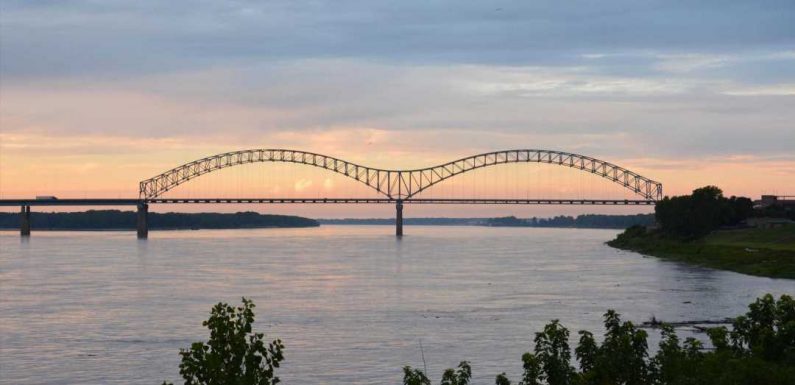
Erick Cedeño is the founder of Bicycle Nomad, an online platform and community for avid cyclists. When his coffee shop of the same name closed due to the pandemic, he headed out on an epic bicycle trip to close that chapter in his life. He just completed the 42-day, 2,200-mile ride along a historic Underground Railroad route. Below, Cedeño tells us about the journey.
One of the things I wanted to do was pay homage to freedom seekers and people that traveled this same route prior to me. I started in New Orleans, but the route I followed from Adventure Cycling association actually starts in Mobile, Alabama. Obviously, the Underground Railroad had so many routes, but this particular one follows an old song [“Follow the Drinkin’ Gourd”] that was sung on plantations. It was the GPS on how to escape to freedom. The song literally says you follow the banks of the Tennessee River, that connects to the Ohio River, and then continue following the North Star. That route goes to Owen Sound, a small town just south of Toronto, but my ending point was Niagara Falls, since I was unable to cross over the border because of COVID-19.
I don’t listen to music while I’m riding my bike for safety reasons, but also because I want to reflect and engage in the experience. In the southern states like Alabama, Mississippi, and Tennessee, you see a lot of plantations and swamps—your mind goes to the people that traveled that route. Like, wow, that must have been so hard to do that trek just to have freedom.
I was born in Panama and grew up in Miami, so I don’t have anyone [in my family] that I know of that traveled along the Underground Railroad, but I am very fascinated by history around the world when it comes to freedom. Because my family immigrated, freedom, for me, is the main thing. My freedom comes from peace of mind, and being able to travel and do what I love.
It took me about 14 days to get from New Orleans up to southern Indiana, and that’s where my trip really started. That’s when I began seeing physical aspects of the Underground Railroad. Right over the river from Louisville, I went to a church in New Albany, Indiana, that was part of the Underground Railroad and I met the pastor, Reverend Leroy Marshall. He took me to the basement, where we went under this door and I saw actual rooms where freedom seekers were kept. [The rooms led] to a tunnel that was connected to where there used to be a hospital across the street, he explained. The nurses would come down and [evacuate] the freedom seekers through the tunnel so slave hunters would not be able to tell that there was something going on at this church.
Three days later, I rode my bike to a small town called Ripley, Ohio [to visit] this particular Underground Railroad station—over 2,000 people went through this house—called John Rankin House. [It’s not far from] a place called Ashtabula, right on the bank of Lake Erie, which was one of the last terminals of the Underground Railroad in Ohio, because from here, they would take the freedom seekers on a boat into Canada.
I’ve been doing [bike trips like] this for 13 years, and my family always gets concerned, especially [since I’m] a person of color. I know it’s not the perfect timing to do a trip. We have COVID, the country is divided, and there’s all this social unrest. But my point is that, along the way, people were so kind.
I always felt, I don’t know about welcome, but I felt like a human being. People would stop in at a convenience store where I was sitting down to drink an iced tea or Gatorade, and we’d just engage in a conversation. Most of the time, because of the history of the Underground Railroad, I was not comfortable telling people that I was alone, doing this historical route, so I would tell them that I was riding my bike from New Orleans to Canada. I just felt sensitive about that. But again, most people were very kind. There were times where people asked, “Can I buy you lunch?” Or, they paid for my campsite.
I mostly camped along the way, but I stayed at a house in Clarksville, Tennessee. Now, this guy was not part of my research, but I felt comfortable—just my intuition—telling him that I was on the Underground Railroad.
[When I told him,] he said, “I have to tell you, I’m not proud of my family history, but my family owned slaves in northern Tennessee.” He goes down to a room and comes back up. At this point, I’m at his house, spending the night. He then showed me an accounting ledger from 1850 and 1860, of slaves’ names and how much they were sold for. To see that kind of history was so interesting.
Whenever I said yes [to offers for for room or board], a lot of people responded by saying to just pay it forward. There’s no way to travel by bicycle on your own. Physically, yes, you are doing on your own. But there are people along the way that that help you move to the next destination, same as the Underground Railroad.
I do encourage people to travel by bicycle, and to travel with a purpose. It’s very challenging mentally, physically, spiritually, to travel by bicycle. You wake up [each] day as tired as you were the night before, but you can’t wait to see this particular house or the National Underground Railroad Museum. The U.S. is a beautiful country and it’s even more beautiful when you see it at 15 miles an hour.
This interview has been edited and condensed for clarity.
Source: Read Full Article










